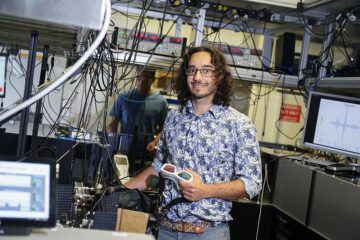MicroRNA206 target Site for Prevention of Unwan-ted Transgene Expression in Skeletal Muscle

</a><strong>Background</strong><br>
Adeno-associated virus (AAV) vectors, in particular serotype AAV9, are the most potent and promising vector types used for gene transfer into the heart. However AAV vectors also transduce non-target organs such as liver or skeletal muscle. Reduction of AAV-mediated transgene expression in non-target organs is an important aim to reduce or avoid unwanted side effects in gene therapy. The use of heart-specific promoters or the use of non-target organ specific microRNAs (miRNA) and its specific target site are approaches to control transgene transcription. E.g. the use of a miR-122 target site in the 3´UTR of an AAV9 vector leads to silencing of the transgene expression in the non-target organ liver (miR-122 is a liver-specific microRNA) (Geisler et al. 2011). <br><br> <strong>Technology</strong><br> We offer a mutated miR-206 target site (TS) as a control element for the si-lencing of unwanted transgene expression in the non-target organ skeletal muscle while allowing transgene expression in the target organ (e.g. heart). miR-206 is highly expressed in skeletal muscle and virtually absent in the heart. Unexpectedly, the expression of wild-type miR-206TS in the AAV9 transgene vector indeed exhibited reduced expression of the transgene in skeletal muscle however transgene expression was also silenced in the heart. This was due to the presence of miR-1 in the heart which shows 86% homology to miR-206. Thus miR-1 in the heart also binds to miR-206TS in the AAV9 vector which results in silencing of transgene expression in the heart. The use of specifically mutated miR-206TS overcomes this problem: miR-206 binds furthermore and even better to the mutated miR-206TS whereas miR-1 cannot bind the mutated miR-206TS. Hence, transgene expression is repressed in the skeletal muscle whereas it remains high in the heart.<br><br> <b>Benefits:</b><ul> <li>Enhanced inhibiton of transgene expression in non-target organ skeletal muscle compared to using wild-type miR-206TS</li> <li>Well transgene (hS100A1) expression in the heart of mice injected with an AAV9 vector containing mutated miR206TS and miR-122TS </li></ul> <p><strong>IP Rights</strong><br> US patent application (04/2012) <br><br> <strong>Patent Owner</strong><br> Charité – Universitätsmedizin Berlin Technische Universität Berlin
Weitere Informationen: PDF
ipal GmbH
Tel.: +49 (0)30/2125-4820
Ansprechpartner
Dr. Dirk Dantz
Media Contact
Alle Nachrichten aus der Kategorie: Technologieangebote
Neueste Beiträge

Neue universelle lichtbasierte Technik zur Kontrolle der Talpolarisation
Ein internationales Forscherteam berichtet in Nature über eine neue Methode, mit der zum ersten Mal die Talpolarisation in zentrosymmetrischen Bulk-Materialien auf eine nicht materialspezifische Weise erreicht wird. Diese „universelle Technik“…

Tumorzellen hebeln das Immunsystem früh aus
Neu entdeckter Mechanismus könnte Krebs-Immuntherapien deutlich verbessern. Tumore verhindern aktiv, dass sich Immunantworten durch sogenannte zytotoxische T-Zellen bilden, die den Krebs bekämpfen könnten. Wie das genau geschieht, beschreiben jetzt erstmals…

Immunzellen in den Startlöchern: „Allzeit bereit“ ist harte Arbeit
Wenn Krankheitserreger in den Körper eindringen, muss das Immunsystem sofort reagieren und eine Infektion verhindern oder eindämmen. Doch wie halten sich unsere Abwehrzellen bereit, wenn kein Angreifer in Sicht ist?…

















